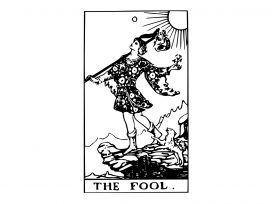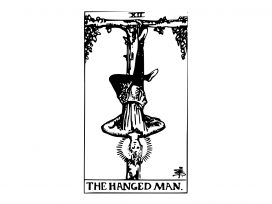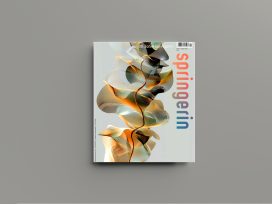The state of suspension
Karl Palmås’ pairings of historical moments and audio excerpts explore suspensions of time during recent cultural, economic and political crises: 1989 chords play under tension; self-referential recordings reflect 2008; and musical dissonance reaches a total collapse of tonal harmony by 2020.
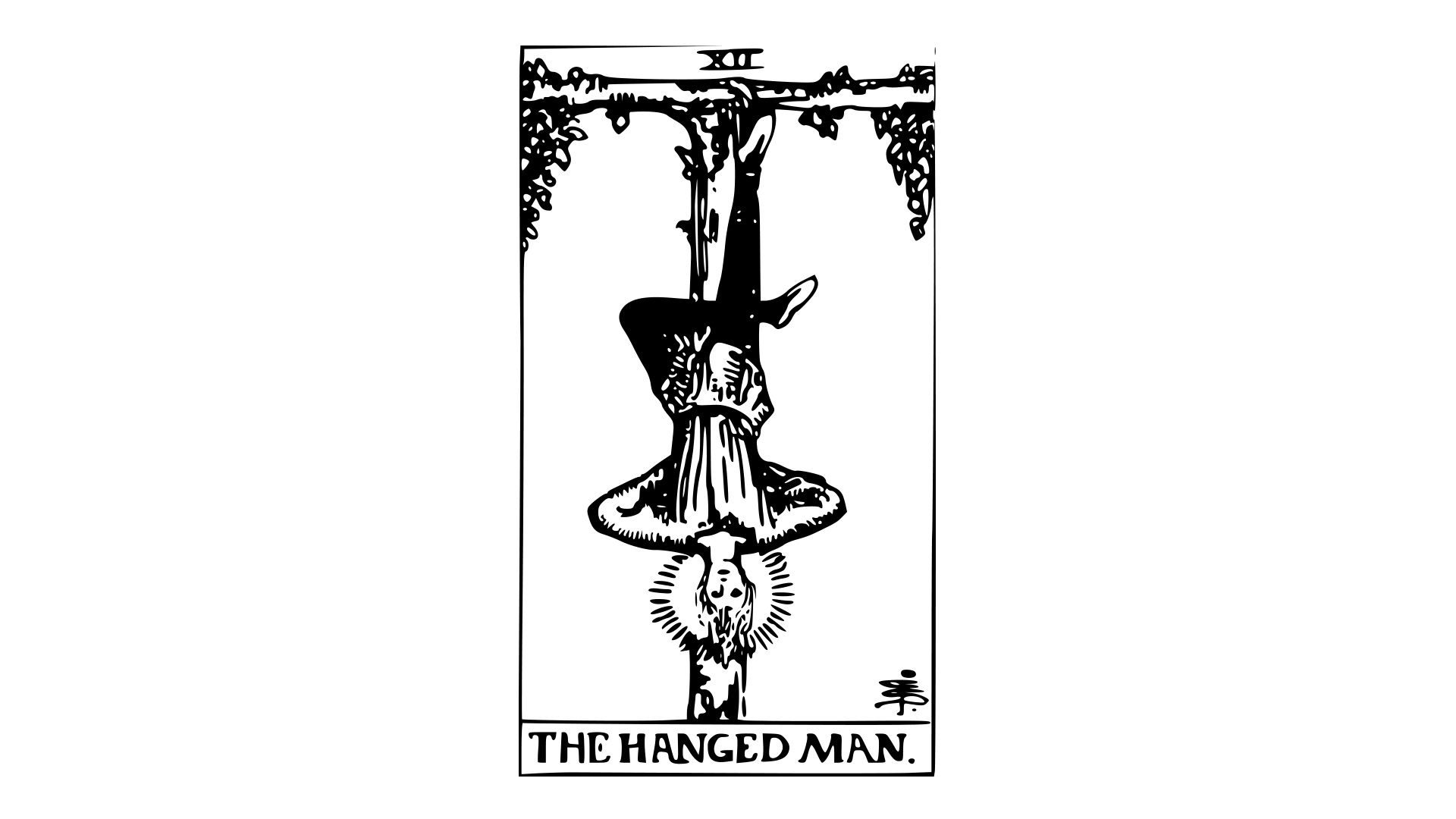
Adaption from graphics by OpenClipArt via Freesvg.org
Mark Fisher uses this scene from Sapphire and Steel as a point of departure for his book Ghosts of My Life.1 In the TV series, Lumley and co-actor David McCallum play detectives on missions to mend broken time. In the final episode, The Trap,2 the viewer ultimately learns that they are ‘eternally suspended’, imprisoned in the service station floating in space. Fisher contends that this gruesome fate illustrates our current political predicament. Wealthy societies of the world have become disconnected from the passage of time. We are in the same state of suspension as Sapphire and Steel – a state ‘in which life continues, but time has somehow stopped.’3 The deceptiveness of our current state – the thing that makes it a trap – is that we have come to experience eternal suspension as pleasurable and meaningful. In Thus Spoke Zarathustra Nietzsche wrote of a tightrope walker suspended over an abyss with a higher purpose waiting on the other side. The present ‘last man’ is the tightrope walker that chooses to stay on the line in order to prolong the suspense. How did we end up here?
1989: The test vignette
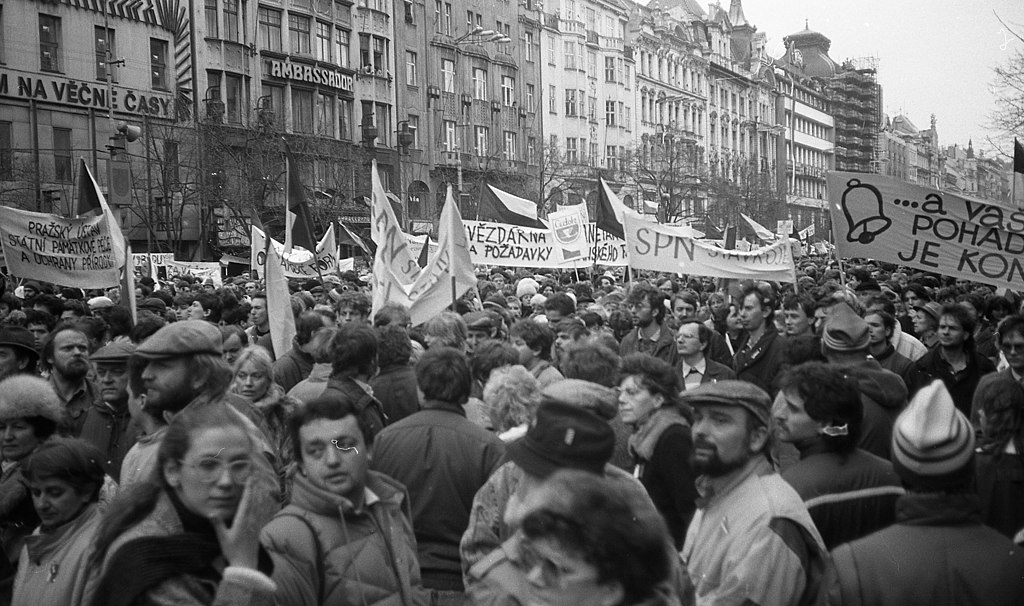
Street photo from the “Velvet revolution” in Prague 1989 Photo by Josef Šrámek ml. / CC BY from Wikimedia Commons
On Monday evening, 11 December 1989, the Swedish state broadcaster aired an episode of the popular motoring programme Trafikmagasinet. 4 As per usual, household name Christer Glenning tested a recently released car. Although his assessment of the Saab 9000i is irrelevant today, the aesthetico-discursive and historical context of this moment is worthy of further examination.
Around this time, the car-testing feature was preceded by a short vignette: a fast-cut montage of car action clips set to the intro from George Duke’s I Love You More. The audio track encompasses a ten-second progression of suspended chords –ten seconds of tension and hopeful anticipation – succeeded by a two-second resolution. In the original Duke track, the song resolves to the tonic (B major) and the first verse starts. In the Trafikmagasinet vignette, resolution comes in the form of a roaring car that accelerates out of the frame of a stationary shot. In both the song and the test vignette, the narrative reaches the denouement expected by the listener.
This vignette was aired during the last month of the 1980s. Just a few weeks later – in the new year, as the ‘short 20thcentury’5 drew to a close – a new period emerged, in which the wealthy Global North processed and responded to the proclamation of the end of history.6 Francis Fukuyama’s 1992 book The End of History and the Last Man 7 has been widely ridiculed, but its ultimate question – who do we become in a time devoid of movement and direction? –nevertheless haunted the decades following its publication.
The dominant cultural expressions of this time can productively be understood as works of mourning. Paraphrasing Marshall Berman, we had lost the world which – even though it threatened to destroy everything we had, everything we knew, everything we were – nevertheless promised us adventure, power, joy, growth and social transformation. In our new world, much of what was solid could still melt into air, but time itself had frozen. Nineties culture was shaped by souls who had been robbed of their sense of time – of the hopeful belief in the directionality of time. It is telling that theorists who later came to articulate this sense of loss – such as Franco ‘Bifo’ Berardi and, indeed, Mark Fisher – belonged to generations whose sense of time had established before this ‘slow cancellation of the future’.8
When watching Trafikmagasinet through the proverbial rearview mirror, it seems obvious that the motoring programme would subsequently enact this collapse of a collective sense of time. By 1993, when Glenning gave his verdict on a new release from Saab, the test vignette – the one based on suspension, followed by resolution – was nowhere to be seen or heard. Presumably, this editorial decision was aimed at a new generation of viewers. This listless slacker generation, which prided itself on being militantly insensitive towards any form of excitement or suspense, became the bearers of the new culture. As the alphas of this generation grew up to become middle managers, the post-89 ice age morphed into one of crisis.
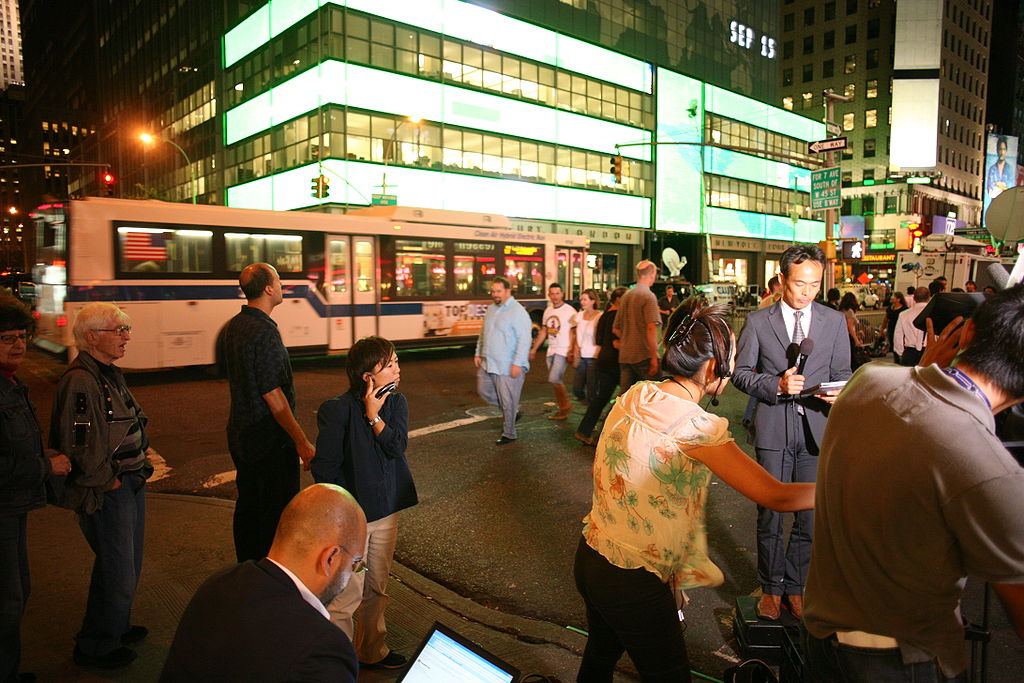
Lehman Brothers Headquarters on Bankruptcy Day
Photo by Robert Scoble / CC BY from Wikimedia Commons
2008: Tout va bien
On Friday evening, 12 September 2008, the winner of the Vincent Award9 was announced at the Stedelijk Museum in Amsterdam. The name of this winner may now be irrelevant, but the moment’s aesthetico-discursive and historical context again warrants further examination.
Just a few days later – after that weekend, on Monday the fifteenth – Lehman Brothers filed for bankruptcy and a financial meltdown ensued. Wall Street began to melt, so did Iceland10 – everything appeared to be melting, including time itself. The notion of crisis as opportunity was established as the dominant critical imperative – a refrain that has subsequently re-occurred during all the crises that followed the 2008 thaw. Nevertheless, the new condition about to emerge was not a simple return to the ‘all-that-is-solid-melts-into-air’ norm.
One of the works nominated for the art award was Liam Gillick’s short film Everything Good Goes. The piece is set in a minimalist office space, where the camera pans across a computer screen displaying the CAD rendering of a building. Are we in a design studio? The work’s title suggests that the on-screen representation of a factory is from the set of Jean-Luc Godard and Jean-Pierre Gorin’s eponymous film. The original film Tout va bien, completed in 1972, was swiftly followed by the supplementary essay film Letter to Jane. Both question the role of the intellectual within the suspended late sixties’revolution. Gillick’s film explores the same thematic within the context of a new mode of production.
The audio track consists of a voice speaking on the phone. A cultural worker presents the concept of a film about to be produced. The monologue mentions the prospect of catching an earlier moment in time: the ‘Volvo moment’ of 17 June 1974, when workers came together to find new modes of collective work, which references Gillick’s earlier work on this theme. The objective of the experiments was to create ‘humanized production’ in which the assembly line’s alienation and atomization was hoped to be replaced by social belonging and meaningful work. Today, production engineers dismiss this endeavour as a mere experiment, a production philosophy deemed obsolete as early as the 1990s. Nevertheless, back then, it constituted an open window for an alternative future.
The phone voice speaks about living in a state of suspension. The notion of being suspended carries several connotations – cancelled events, paused processes and dismissals or redundancies. It also implies a state of tension, hovering perilously above ground. In subsequent lectures, Gillick situated this notion in a discussion about the state of contemporary art.11 He asserted that, since the mid-1990s, a discursive model of praxis has been developing within a critical art context, which can be traced through the expansion of content-heavy seminars built into art projects, and the proliferation of the short text and artist’s statement. The text emerges as not only an idea carrier but also the key event itself.
At the heart of this discursive praxis, he continues, is the reexamination of ‘the day before’ – the moment in which there was a fork in the road, when an alternative future might have emerged. This is where the discursive mode of praxis enacts a state of suspension. The discursive is the only structure that allows the artist to project a problem just out of reach and work with its permanent displacement. As such, this mode of praxis ‘provides an infinite suspension of critical moments’, 12 feeding off a sense of ‘just-around-the-corner-ness’. This, in turn, is emblematic of the more general problematic that contemporary art faces: in a creativity-obsessed production model, the art institution tends to follow the same logic as the Volvo factory by creating ‘the conditions for the experimental, but no actual experiments’.
While Gillick’s argument is framed within a contemporary art context, it nevertheless lends itself to other contexts. Indeed, the infinite suspension of critical moments has become the defining feature of the age of crisis. Since Lehman, we all seem to write texts that engage with the lure of just-around-the-corner-ness.
As a result, this state of suspension is not identical to the post-political condition as theorized in the early noughties. The latter is construed as emerging after 89, as a result of neoliberal programmes devised by technocratic elites. The state of suspension emerged twenty years later and is not anchored in technocracy but, as previously stated, in an aesthetico-discursive context considered in relation to culturally enacted understandings of time.
Indeed, like Berardi and Fisher, Gillick brings our attention to a certain generation for whom the idea of the future is still intact. Pioneers of the discursive mode of praxis belong to the generation who experienced the post-war era’s future optimism first-hand. They lived the promise of public housing or communal experiments before such projects were dismissed as failures by both the left and the right. This generation experienced a just-around-the-corner-ness in which something was really at stake. Hopeful anticipation was invariably tied to an impending resolution of tension. For subsequent generations, this has simply not been the case. For those who lack a lived experience of post-war utopianism, the ‘hauntology’ of Boards of Canada does not sound like the decomposing memory of a lost future – it sounds like a mere style or genre.13
Life in the age of crisis is therefore defined by a non-committal just-around-the-corner-ness – hopeful anticipation, followed by hopeful anticipation, followed by hopeful anticipation. The paradigmatic music of the frozen nineties aestheticized this sense of inconsequence. Duke’s I Love You More could still exist in this culture but primarily in the guise of Daft Punk’s Digital Love. The music’s suspended chord progression, looped for four minutes and fifty-eight seconds, is a narrative that never resolves – there’s no denouement, only a perpetual repetition of promise and longing.
Fukuyama evoked an image of the last man as a creature whose purpose was reduced to performing ‘the perpetual caretaking of the museum of human history’.14 In the age of crisis, another dystopia emerges: if you want a picture of the future, imagine a design studio in which Digital Love is played on repeat, forever.
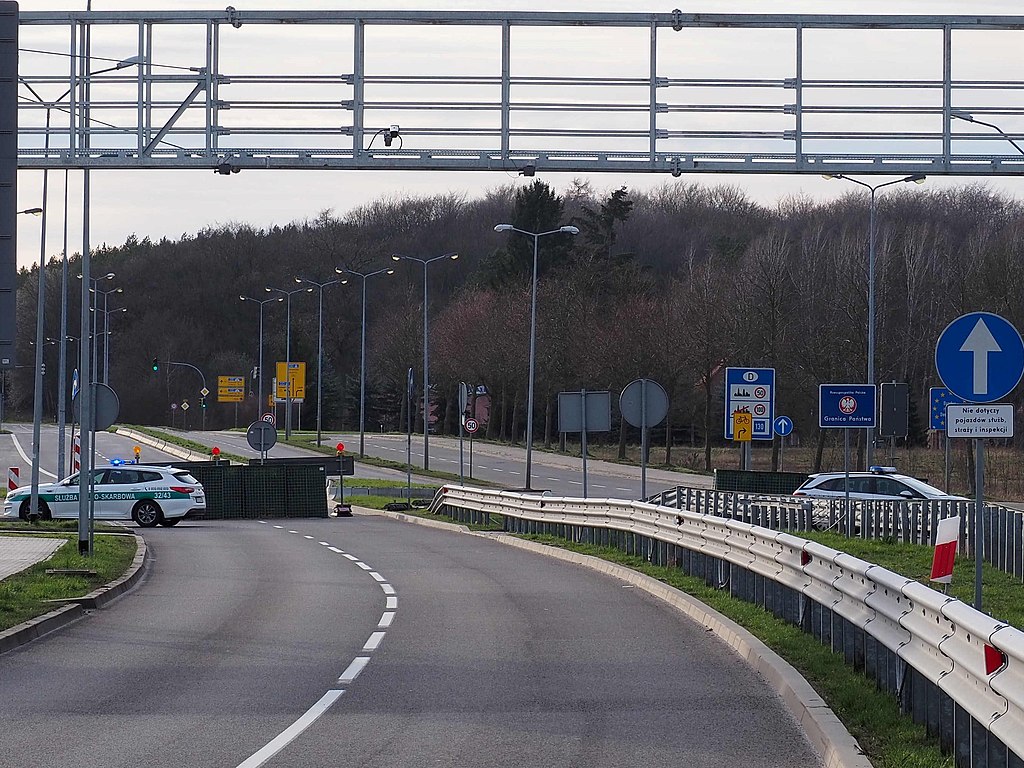
Roadblocks and police vehicles at closed border between Germany and Poland in Lubieszyn during the COVID-19 pandemic in 2020.
Photo by MariuszKerlo93 from Wikimedia Commons
2020: The political suspension
Musical harmony is a composite of physical and biological phenomena, which resonate with cultural habits. The history of music is a story of our gradually increasing tolerance for dissonance. Innovation in musical composition has often emerged from new approaches to dissonance. The famous ‘Tristan chord’ that introduces Wagner’s opera Tristan and Isolde is just one example.
Similarly, musical history can be understood in terms of our gradually diminishing expectations regarding tonality. Wagner used dissonance in his opera to create an aural sensation wedded to the theme of eternal love and suffering. Though the piece lingers on this dissonance for more than four hours, Wagner nevertheless felt compelled to end the opera with a consonant tonal centre as resolution. Today, we are less reliant on narratives that clearly gravitate around and back towards a tonic. We can inhabit the sonic space of Digital Love without feeling disoriented.
The age of crisis’s soundscape is heavily reliant on the suspended chord, in which dissonance creates a sense of indeterminate tension. Tradition holds that this chord necessitates that the following chord is the tonic – tension is followed by release. For this reason, it has been deployed as a dramaturgical device in musical narratives. 15
Moreover, the ‘sus chord’ possesses the curious property of being coloured by its context. When lodged in between two major chords, we interpret it as a major chord. In the context of minor chords, it sounds minor. This property is also exploited by composers, since it enables them to create seamless key changes, transitioning between major and minor.16 Thus, the sus chord is a blank space for speculative projections and the harbinger of a change of direction.
These characteristics are also present in political discourse related to a state of suspension. In this condition, the crisis becomes our dramaturgical device, our object of speculation and a cherished harbinger for a change in political direction. During spring 2020, the pandemic has acted as a projection screen for social theories of all types – indeed, show me the theorist that has not chosen to re-release their trademark idea this spring. Which theoretical tools have not been put to work in anticipation of the critical moment when lockdowns [1] will be lifted? Which construct has not been re-launched in this moment of tension, just before the key change?
We now know that this convention of musical narratives has broken down. Today, we recognise Digital Love as an early example of a more general collapse of traditional tonal harmony. Politics within the age of crisis leads us to the same conclusion. Since Lehman, a series of critical moments have been anticipated. Indeed, some would argue that today’s crisis is an expression of an unresolved 2008 crisis – the result of a perpetual postponement of critical moments. This suspension is the result of the ‘unconventional’ monetary policy of quantitative easing – an evidently limitless expansion of the pecuniary balloon, which has caused us all to soar away from what was previously considered stable economic ground.17 quantitative easing policy. It is therefore telling that Modern Monetary Theory (MMT) – the one theory that can justifiably be called a new release this spring – is affirmation of infinite suspension’s logic.18 MMT relies less on the temporality of the critical moment and more on the temporality of ‘during the foreseeable future’. In this state of suspension, the effective, radical solution is based on pushing resolution into the future.
MMT is therefore paradigmatic as a political solution. Borrowing the language of chemistry, one may specify this claim, inasmuch as it is ‘not a solution but a suspension’. After twelve years of crisis, the stable, homogeneous solution seems an obsolete political objective. The organisation of human affairs has instead shifted towards the creation of political suspensions – the kind of heterogeneous mixtures that appear to be solutions, so long as their indeterminate neither-nor-state can be upheld.
Mark Fisher, Ghosts of My Life: Writings on depression, hauntology and lost futures, Zero Books, 2014.
D. Foster, Sapphire and Steel (The Trap), ITV, 31 August 1982.
M. Fisher, Ghosts of my Life, p. 6.
Between 1978 and 2003, the broadcaster aired more than 500 episodes of this popular show. As a non-Swedish observer may expect, it was like a sensible, social democratic brother to Top Gear, catering to the average motoring consumer.
The ‘short 20th century’ is a term used by historians, originally by Hobsbawm, to denote the time that passed between the outbreak of WWI and the 1991 dissolution of the Soviet Union. The communist project began winding down in late 1989 and the 1990s began to represent a new era.
The imaginary of the end of history was not invented during this period, but the idea gained considerable traction after 1989.
F. Fukuyama, The End of History and the Last Man, Free Press, 1992.
M. Fisher, Ghosts of My Life; Franco Berardi, After the Future, AK Press, 2011.
The Vincent van Gogh Biennial Award for Contemporary Art in Europe.
Iceland’s banking system was also sucked into the crisis.
L. Gillick, Industry and Intelligence: Contemporary Art since 1820, Columbia University Press, 2016, Chapter 10.
For Fisher, musical acts like Boards of Canada can be placed in a genre named after Derrida’s concept of hauntology. This genre instils a sense of a future that once existed and thus reminds us of the loss of this future.
For Fisher, musical acts like Boards of Canada can be placed in a genre named after Derrida’s concept of hauntology. This genre instils a sense of a future that once existed and thus reminds us of the loss of this future.
F. Fukuyama, ‘The End of History?’, The National Interest, Summer 1989, p. 18.
Composers’ use of dissonance to build and release tension was observed by Leibniz – in other words, as early as the late-1600s. See: Jacques Attali, Noise: The Political Economy of Music, Minnesota University Press, 1985, p. 27. Attali’s general approach – that of studying music as prophecy, recognizing that ‘its styles and economic organization are ahead of the rest of society’ – is in part adopted in this essay.
Granted, there are other approaches to building and releasing tension in chord progressions, most notably the sequencing of tonic, subdominant and dominant chords, which may also be used in introducing key changes.
In 2015 European Central Bank president Mario Draghi famously used the term 'whatever it takes’ when describing how far the bank would take its
See: S. Kelton, The Deficit Myth, Public Affairs, 2020.
Published 19 August 2020
Original in Swedish
First published by First published by Glänta 1-2/2020 (Swedish version) / Eurozine (English version)
Contributed by Glänta © Karl Palmås / Glänta / Eurozine
PDF/PRINTPublished in
Newsletter
Subscribe to know what’s worth thinking about.
Related Articles

On the border between Poland and Belarus, the Forest has become the subject of a humanitarian crisis. An artist’s report, based on meetings with activists and refugees, charts this contested space. Poetry honours those lost in transit.
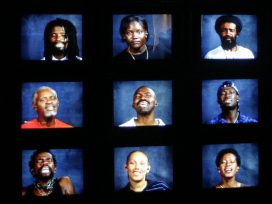
The white saviour, driven by a moral mission, benefits from the oppression they claim to resist. Reactions to the plight of ‘victims’ often fail to translate into concrete actions, leaving those in need of care begging for sympathy. Could acknowledgement of individual complexity to the point of mystery alter this dynamic?


